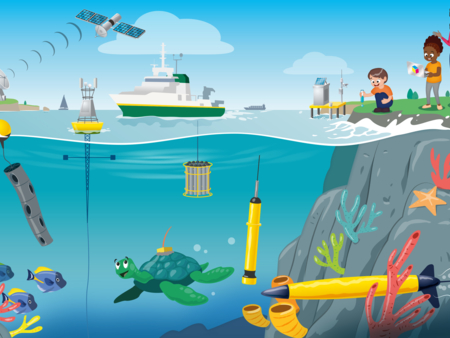Unit 5: "Ocean currents"
How do ocean currents work? What happens at a smaller scale in the Mediterranean? Study the currents and learn more about HF radars.

Discover the various ocean observing networks!
How do ocean currents work? What happens at a smaller scale in the Mediterranean? Study the currents and learn more about HF radars.